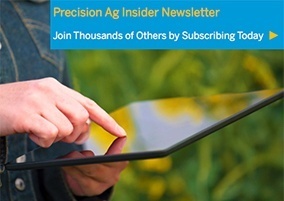 Let the sun shine on your farm's bottom line!
Let the sun shine on your farm's bottom line!
Seriously...it is time to let the precision ag management mindset help drive your farm's profitability.
Let's hear from the experts.
Markus Braaten has been spreading the word about this Precision Management Mindset to growers for over a decade. The former Manager of Agronomy Services for Agri-Trend’s Knowledge Team who is now Crop Manager with Yara North America, has developed a particular awareness of the misinformation surrounding precision ag, and wants to change it.
“What growers think is precision ag differs widely,” he says. “With some growers it’s all about, ‘Okay I have guidance in auto-steer therefore I’m doing precision ag’. Others say, ‘We are doing some VR application with my retailer so I’m doing precision ag’, or, ‘I’ve got a yield monitor on my combine, now I’m doing precision ag’.”
Each statement may be true to some degree, depending on the grower’s overall management strategy — but they all miss the bigger picture.
BOTTOM LINE: VARIABLILTY IS A REALITY
“In my mind, precision ag is understanding that we have a variable yield potential driving the need for variable management,” says Braaten. “It’s not about ‘VR Everything’ or the latest VR technology — it’s acknowledging the fact that we have variable yield potential across the farm, which requires me to develop a variable strategy that incorporates the right management in the right place.”
Some of those places are more productive than others, and Lindbloom’s favourite part of his detective work is discovering a client’s “All-Star” zones.
When growers first understand their productivity zones, their first instinct is to improve the lower-producing areas. But that’s not the only option, says AGRI-TREND Coach Lance Lindbloom, who works out of Torgerson's in Havre, Montana.
“If we can’t economically change a lower producing zone, we have to look at the other side,” he explains. “How can we reduce the inputs we put in those areas or — and this is the really powerful point — can we redirect them to some of our higher producing areas and get even higher yields.”
PRECISION AG DOES NOT EQUAL VARIABLE RATE
None of those decisions can be made until the grower has a good handle on his farm’s yield variability, says Braaten. “If we don’t start there — if we too quickly jump to, say, VR phosphorous application without knowing the impact — is it just then a feel-good pass?”
Most savvy growers don’t have the time or money for feel-good farming practices. Rather, they make the effort to understand and refine what Braaten says is perhaps the most important metric in farming today: Cost per Unit Production by Zone.
“This is a function of your cost by zone and your productivity by zone,” Braaten explains. “You need to know how many bushels you’re growing by zone, and what it is costing your to grow those bushels by zone.”
Once this is known, the rest is easy. That’s why to Braaten, good precision management is a decision of economics as much as agronomics.
“As a grower, if I truly buy into this concept of variable yield potential necessitating the need for variable management, I must always ask myself: What is the ROI of this management practice? Does it make sense to deploy it in this zone? Does it make sense to invest this dollar in this zone and return $3 dollars, or does it make more sense to invest it in a higher producing zone? We can be quick to jump to the data set we’re most comfortable with, but it’s about knowing the right numbers and making decisions based on that.”
While cost-per-unit by zone is a relatively new concept now, Braaten believes it will shape the future of sustainable farming. “If we discover the ‘fix’ costs and see we’ll never produce profitable bushels, it’s a different question. Now it’s about how to minimize losses in this zone, or do you even want to farm this zone?”


